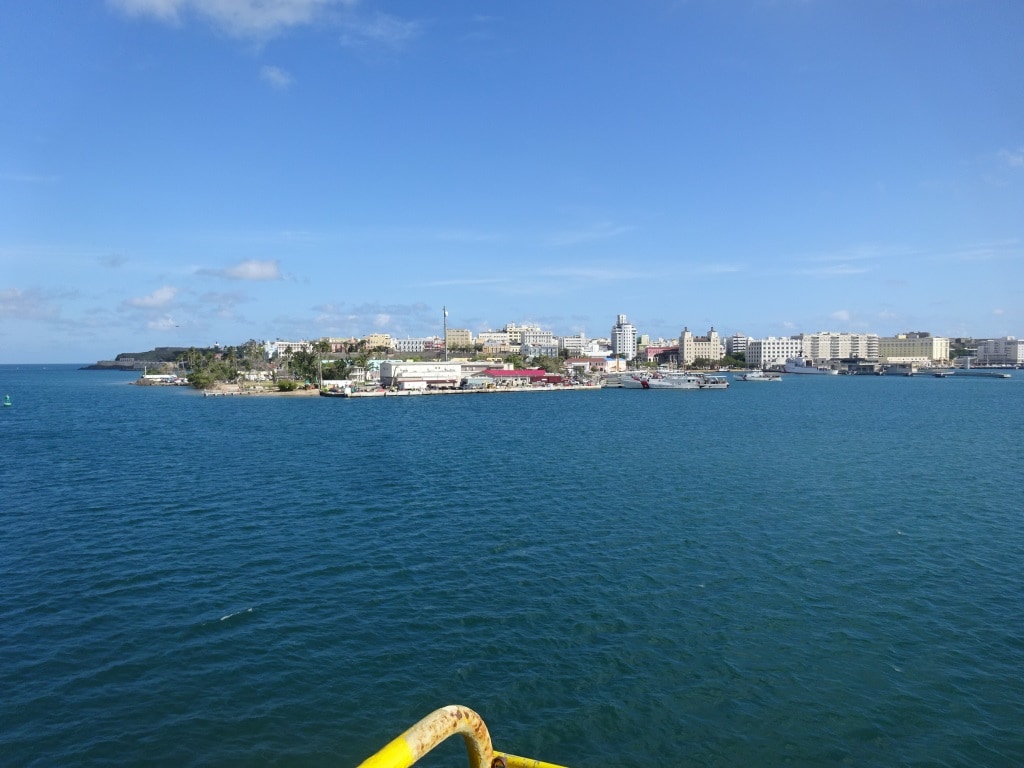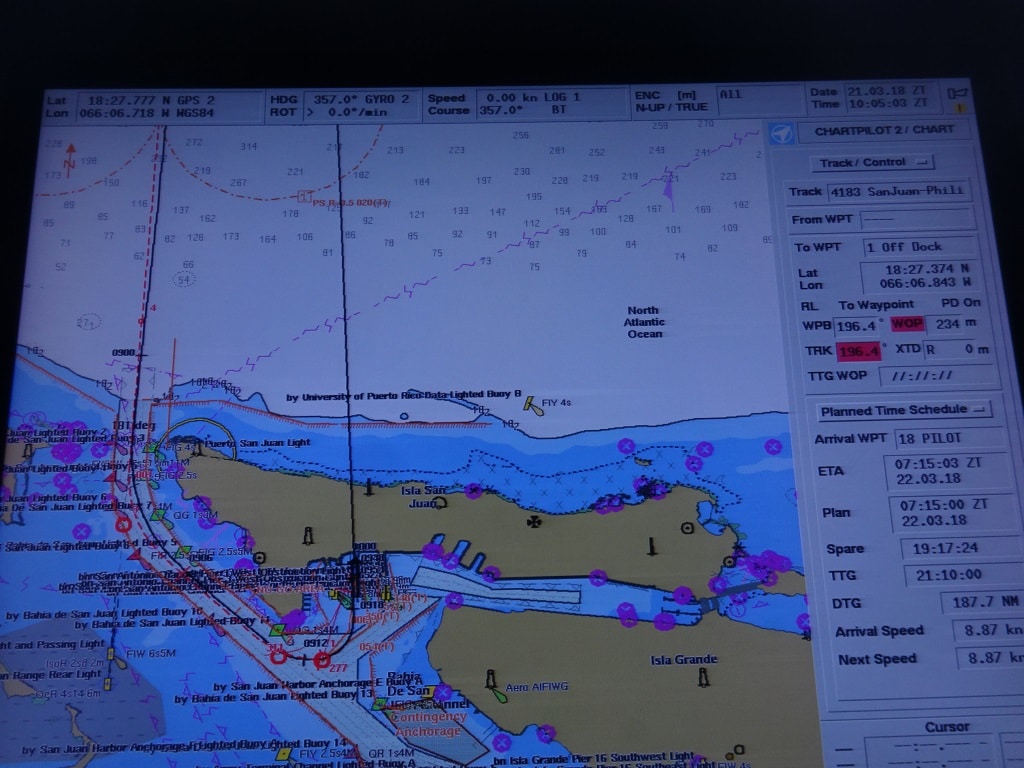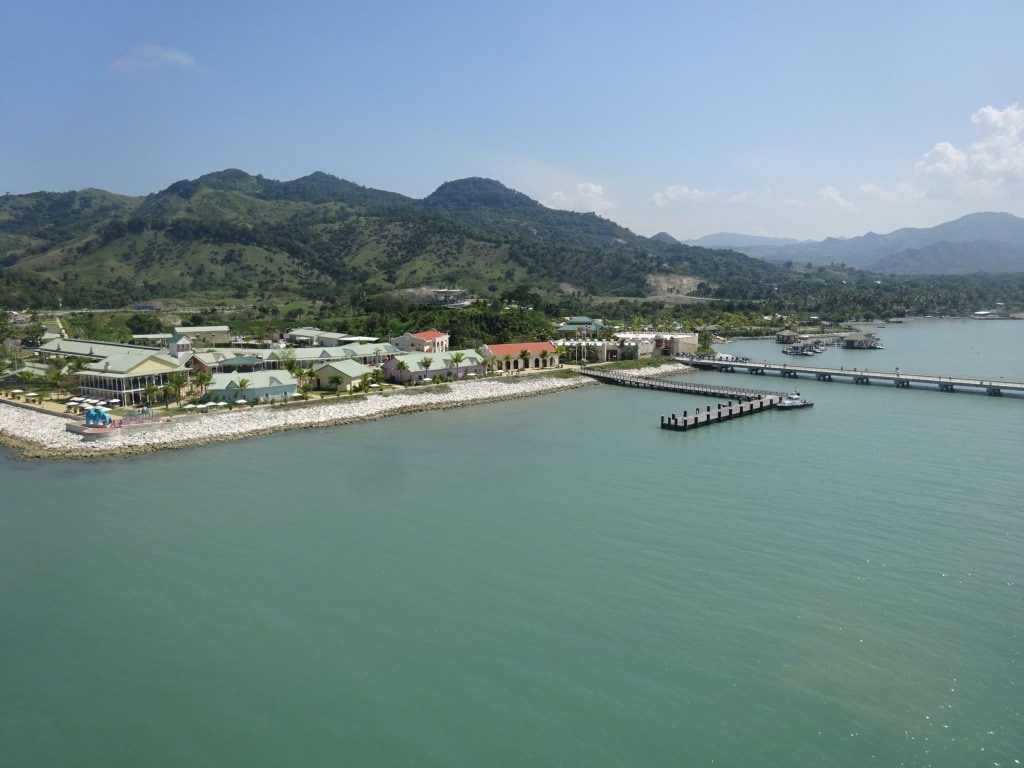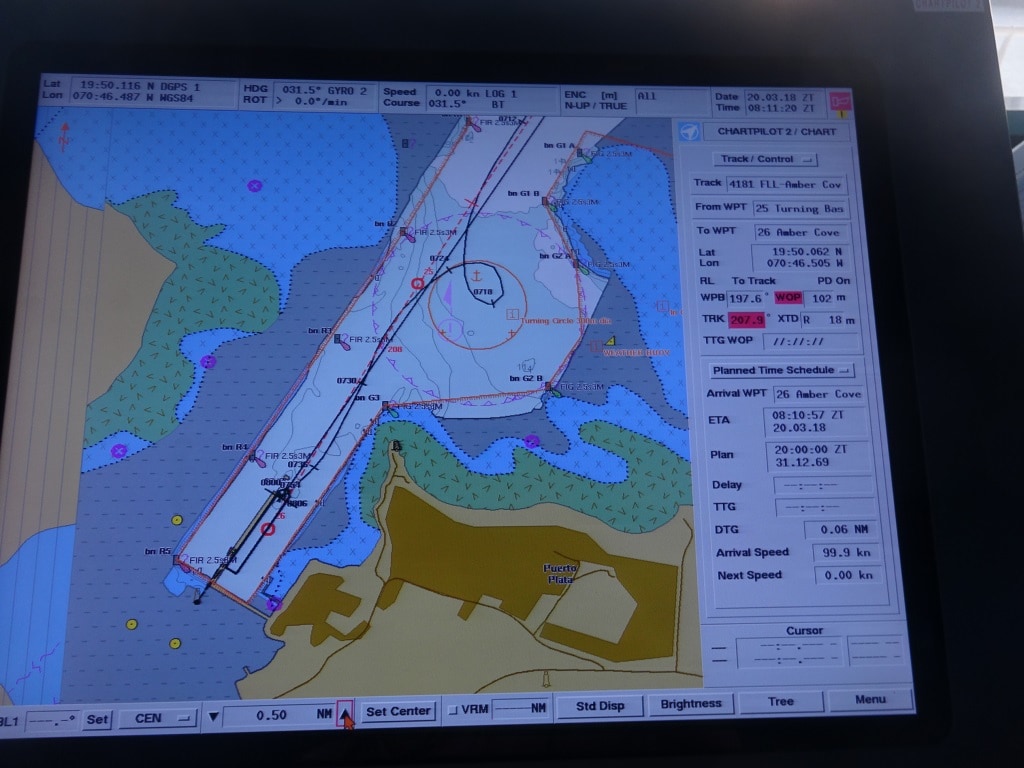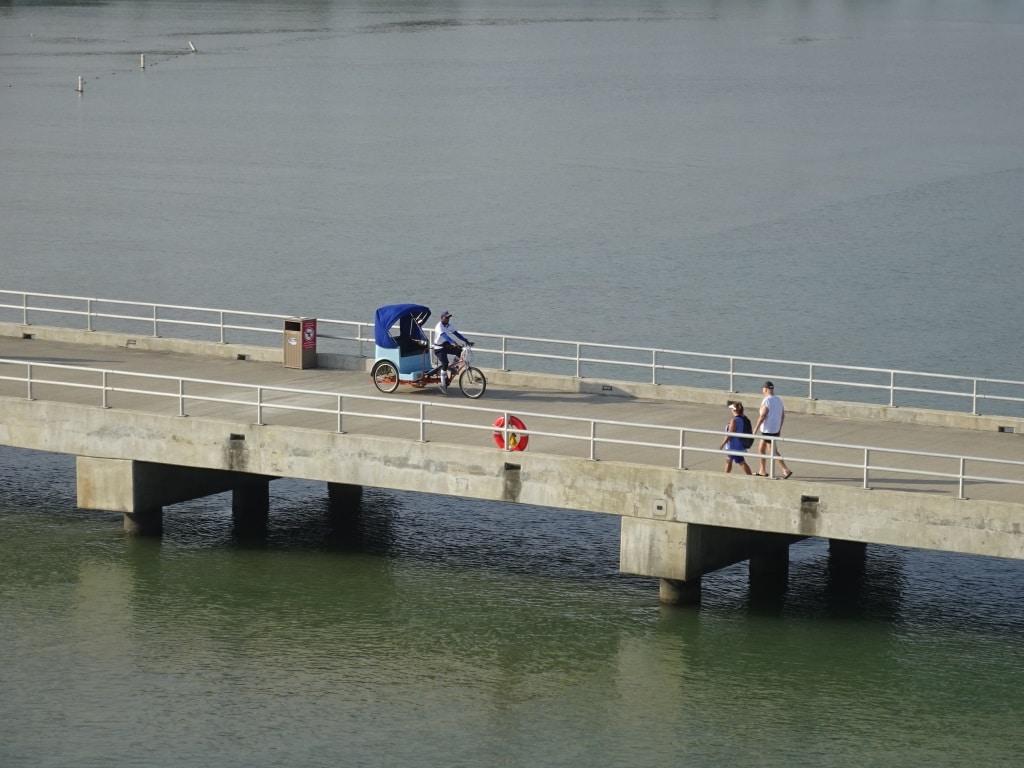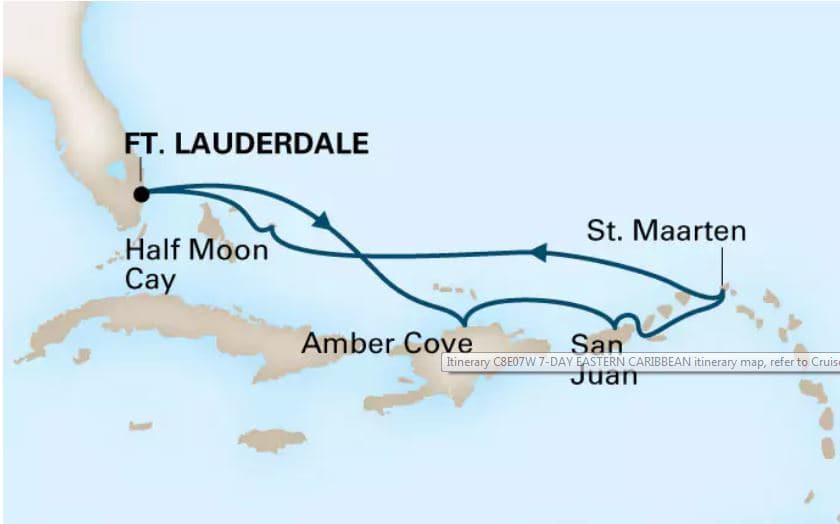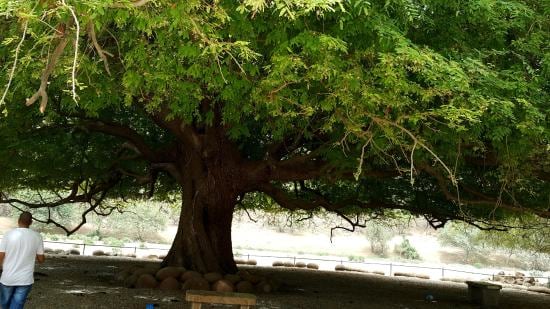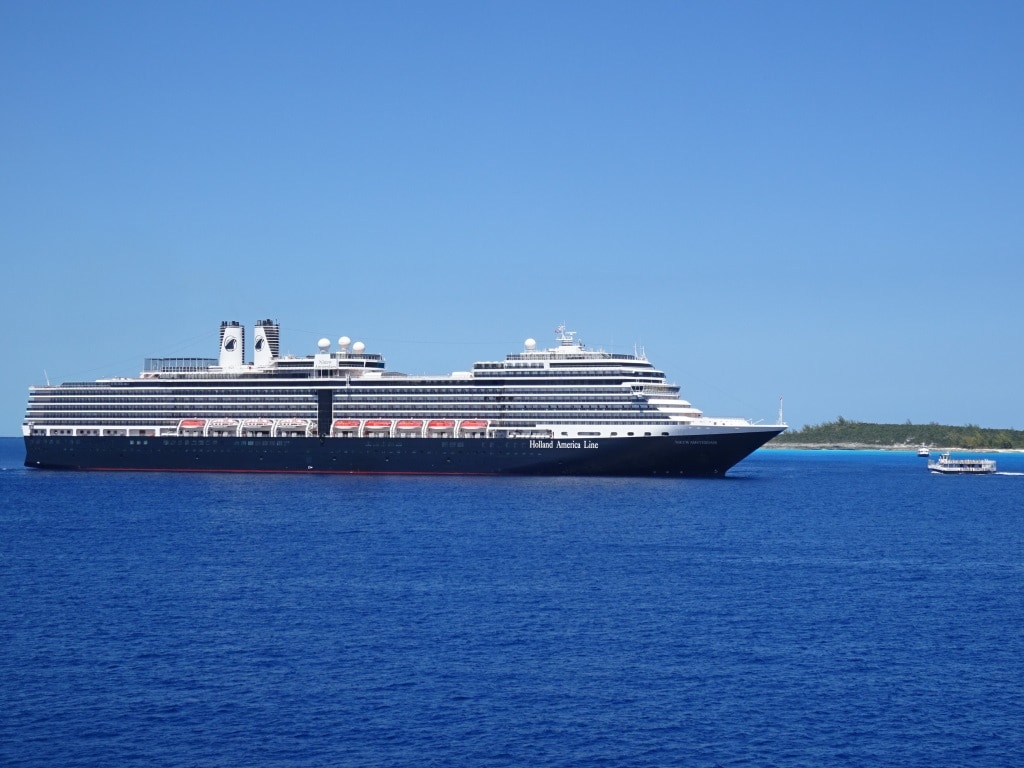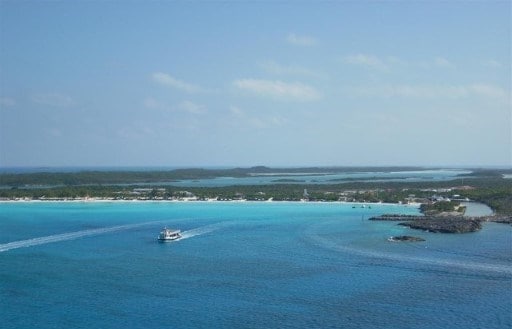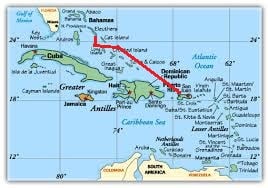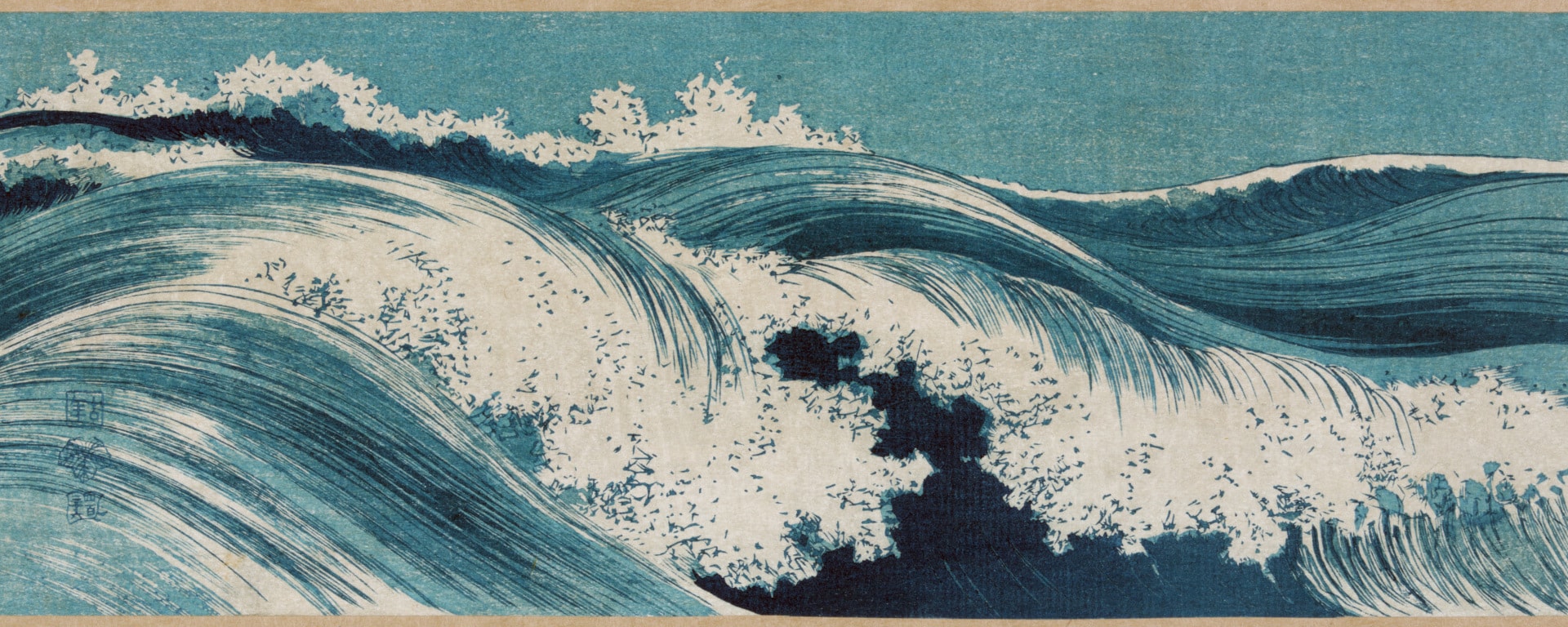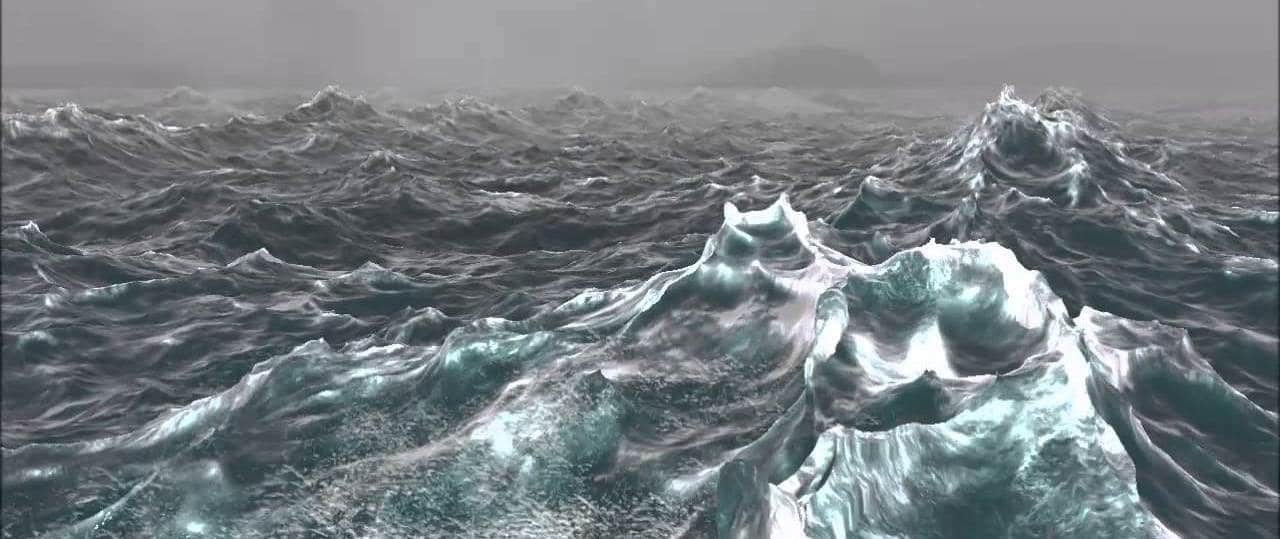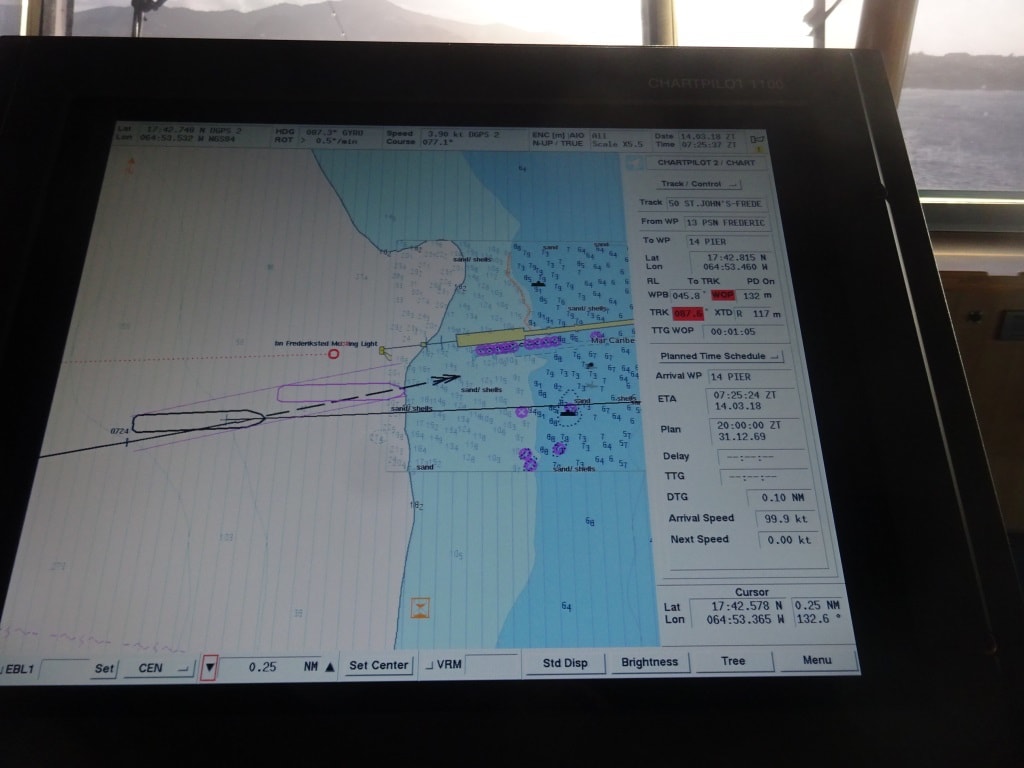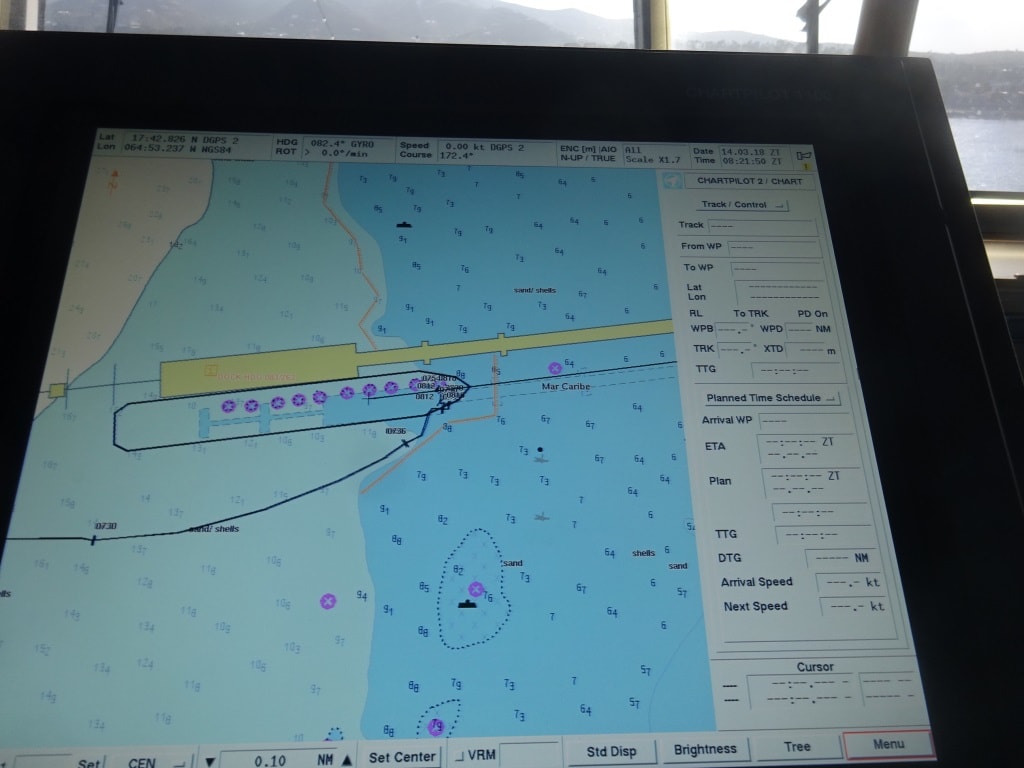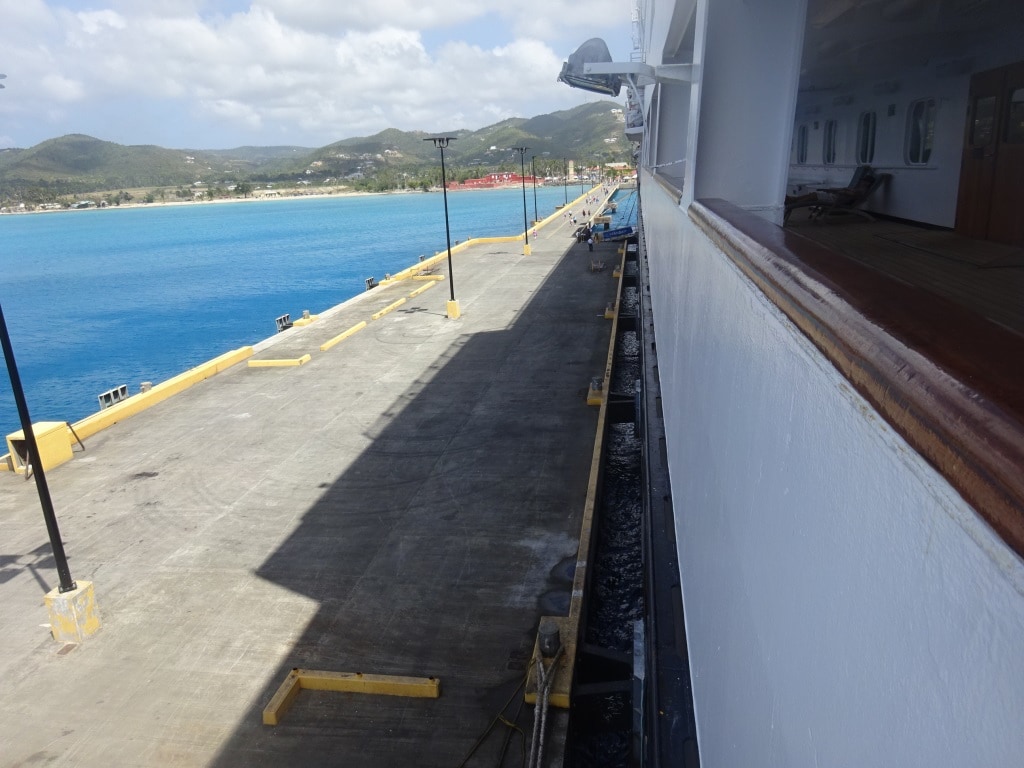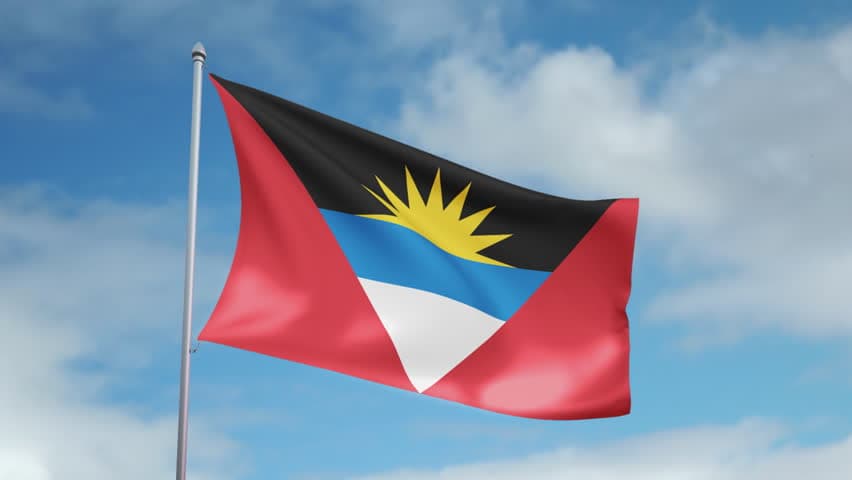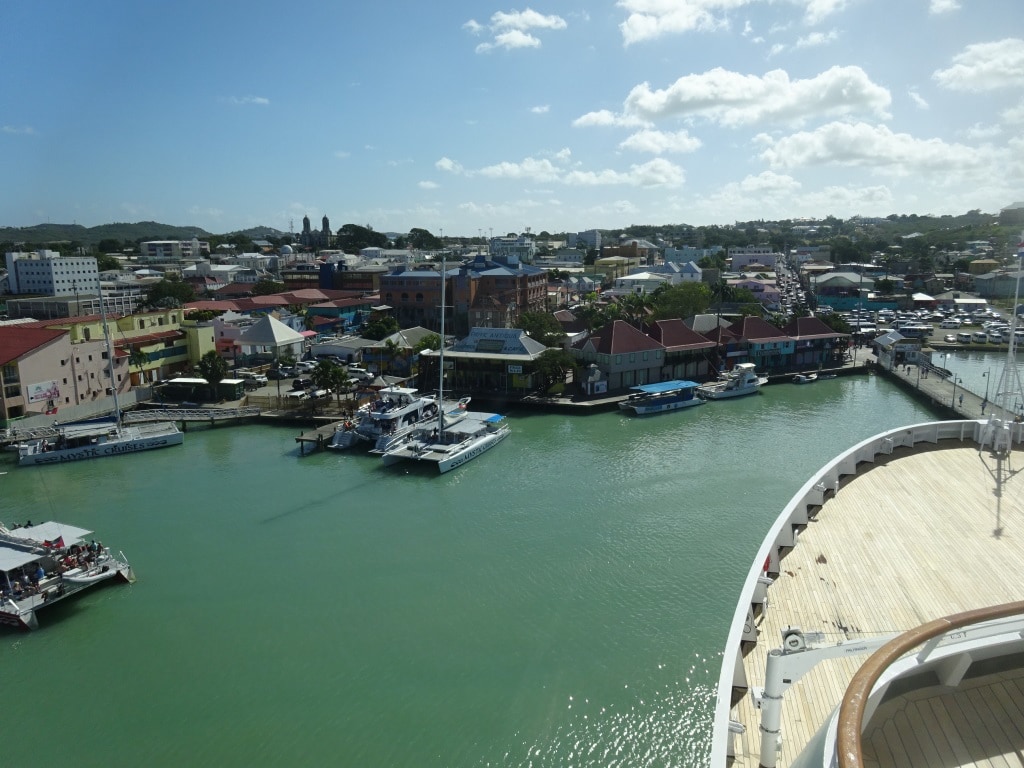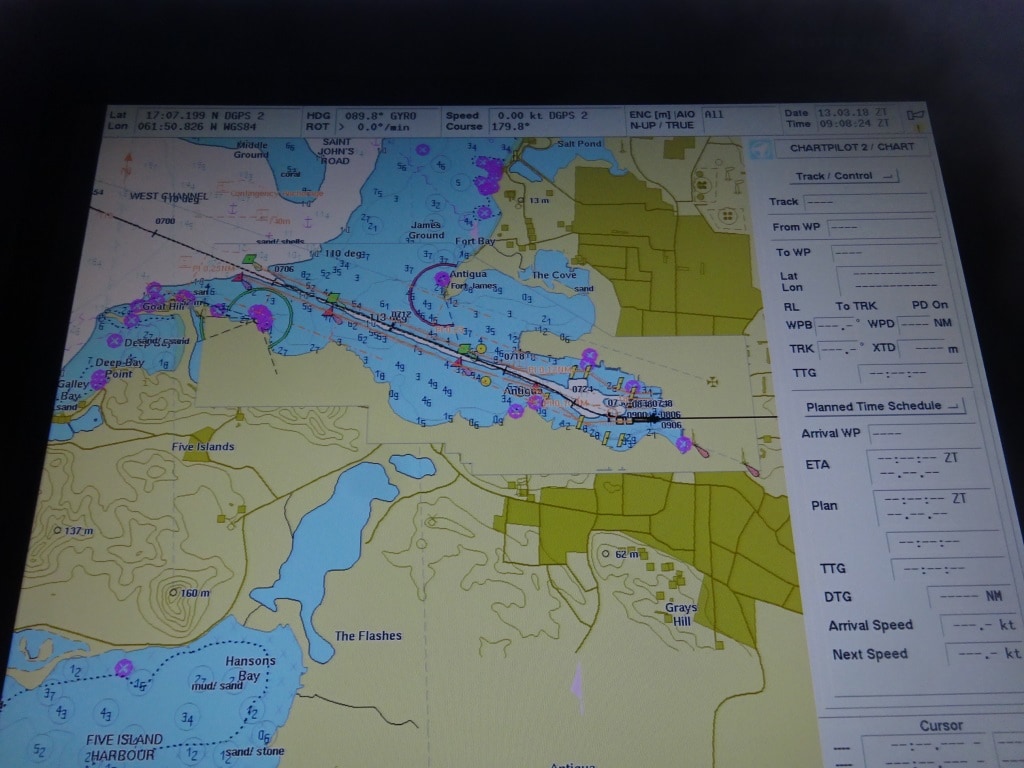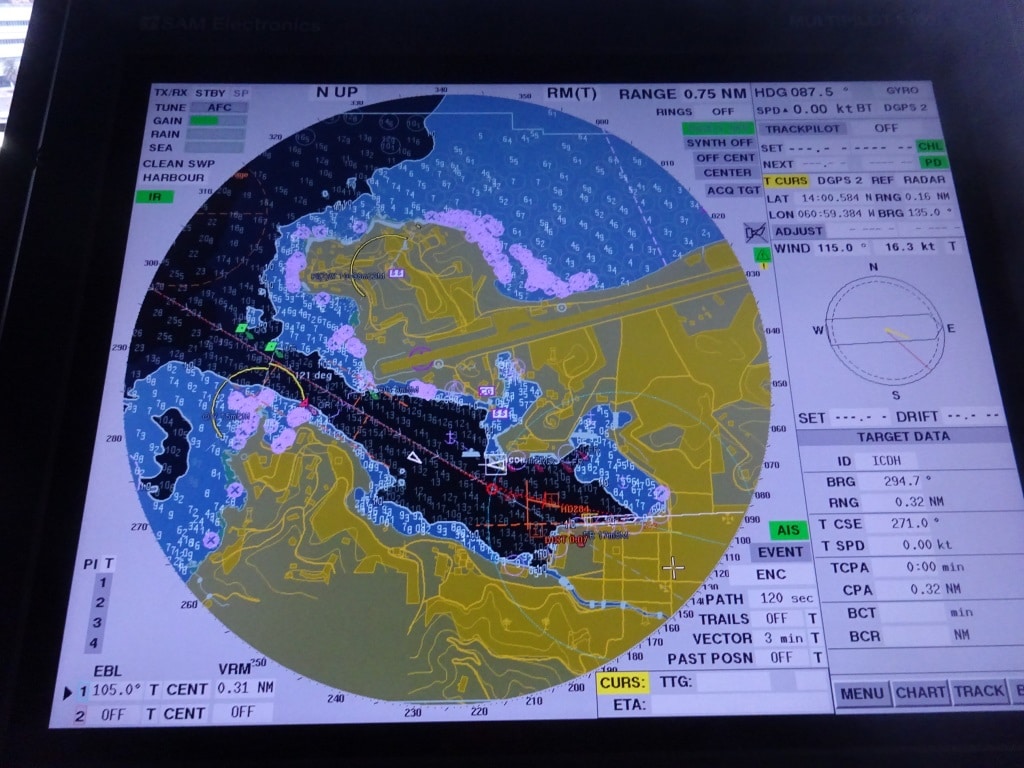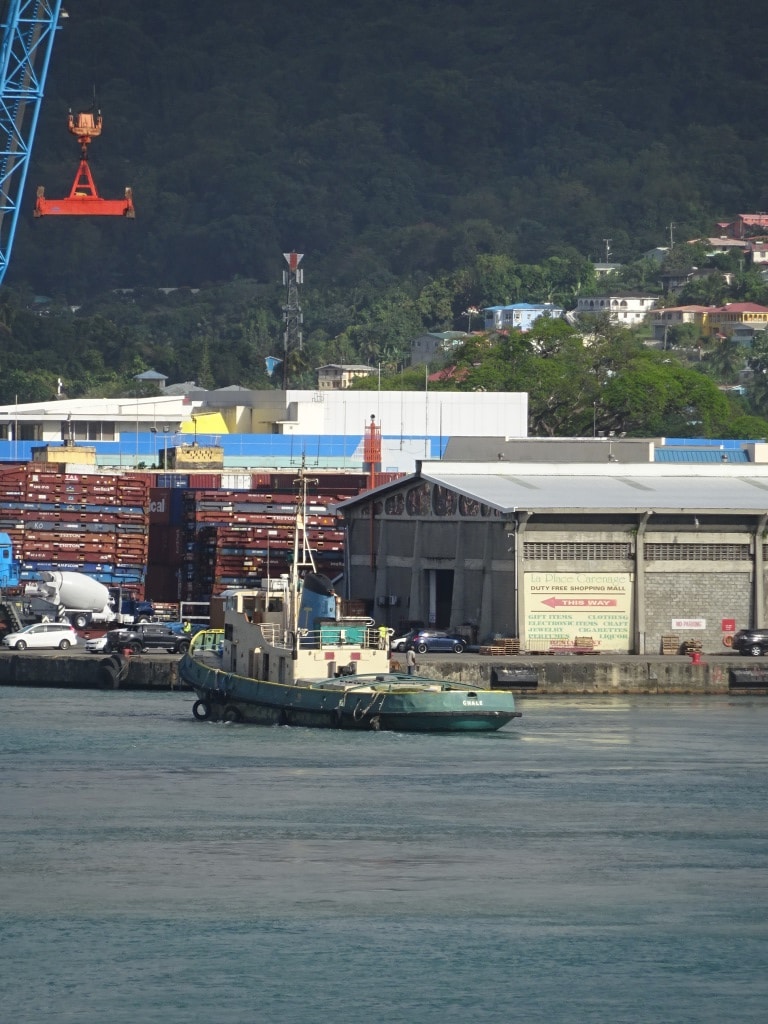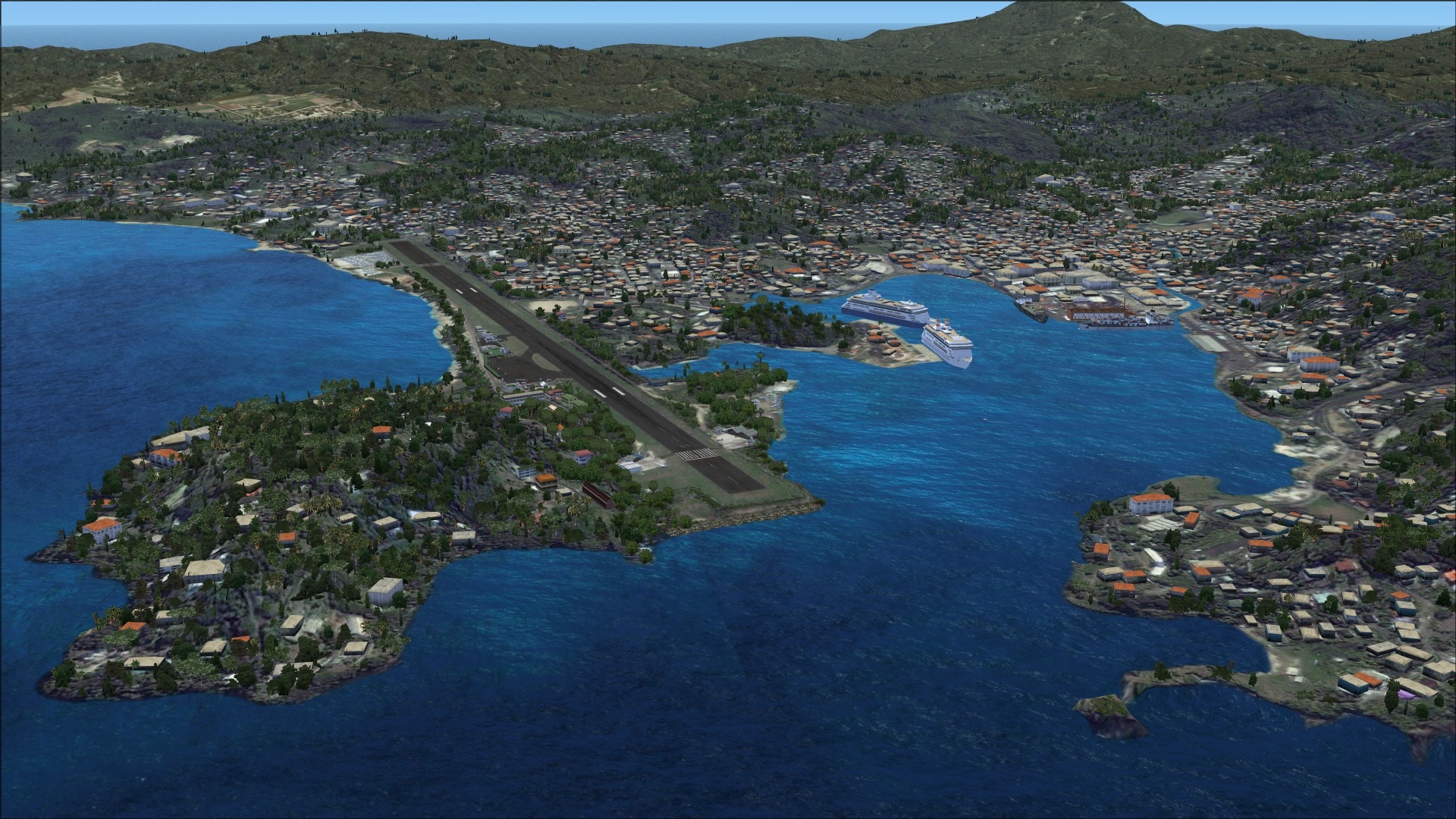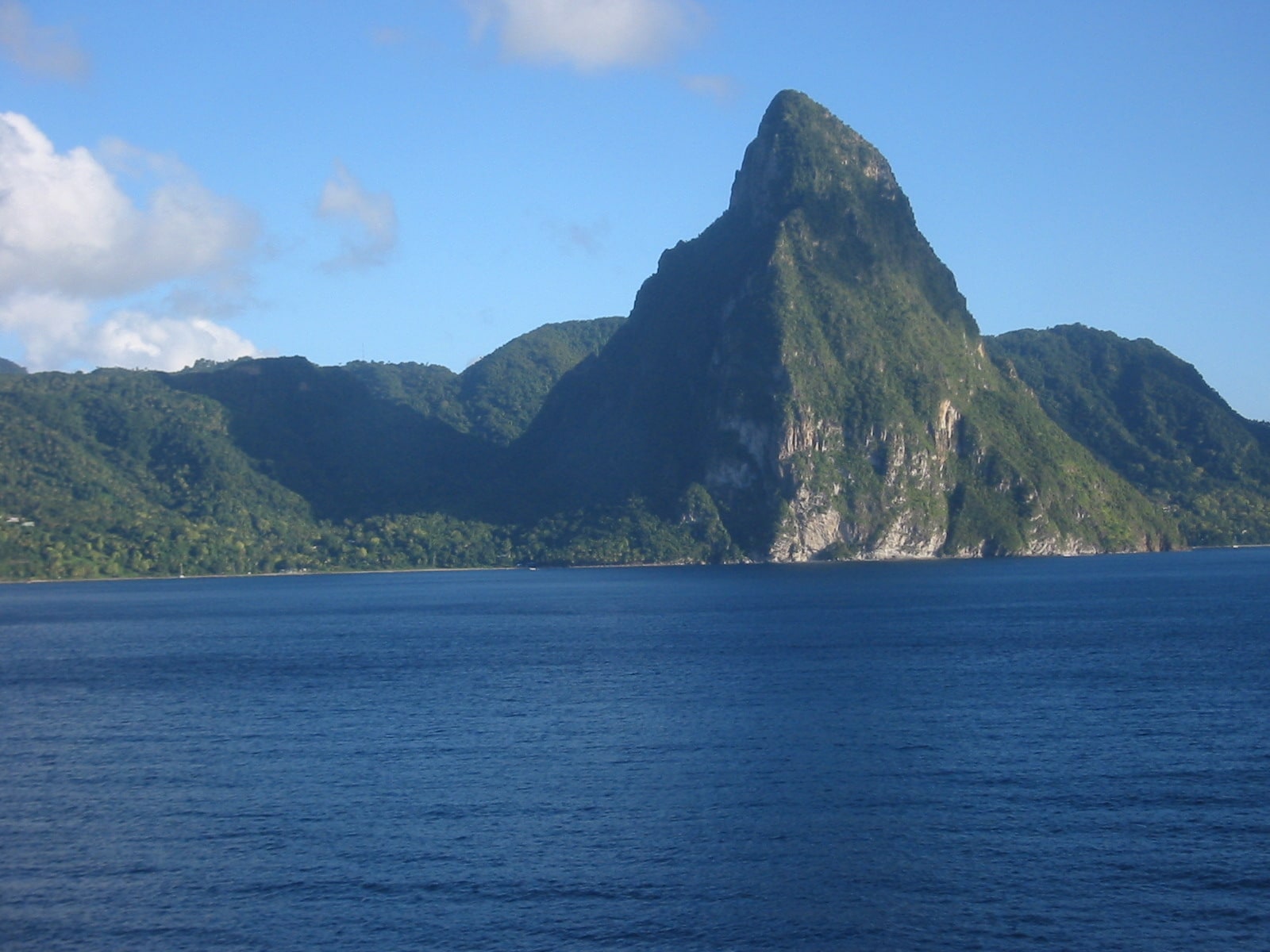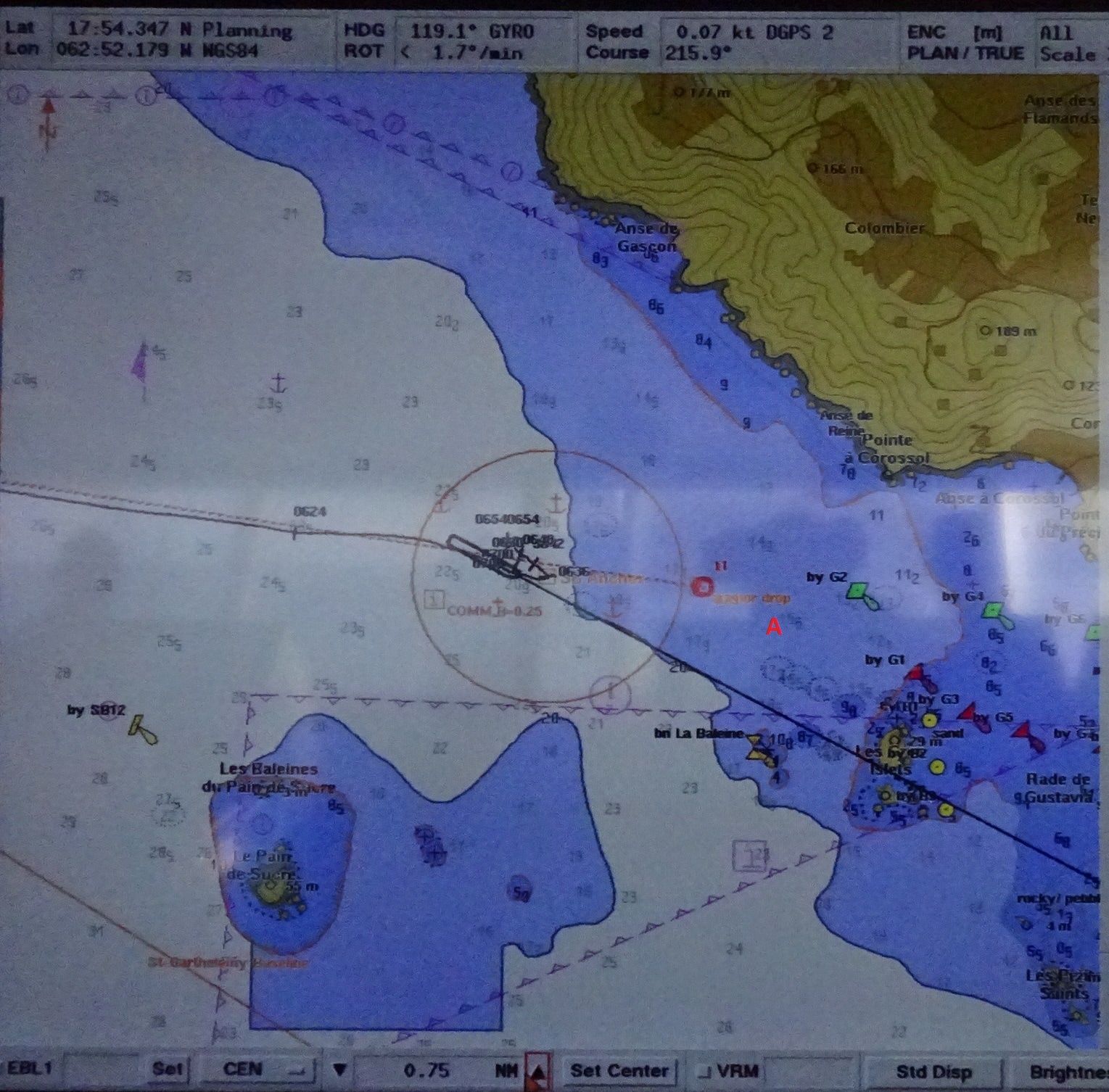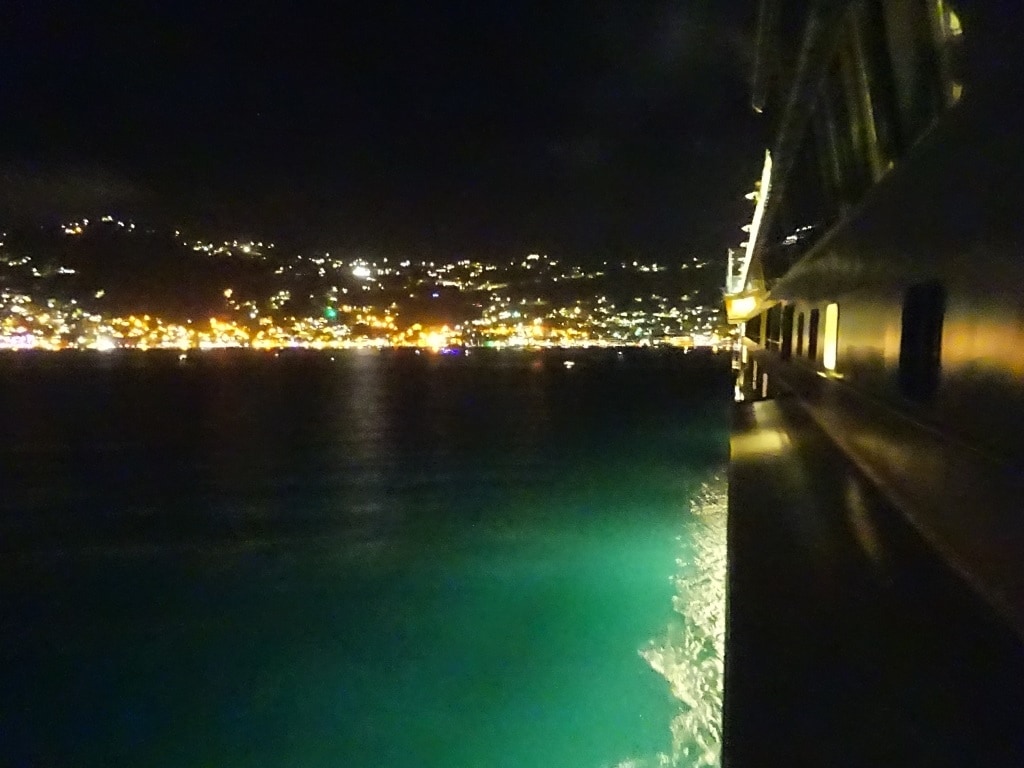Today we were back in Philipsburg on St.Maarten, which is located on the Southside of the island. The island is split in half. The northern side that belongs to France, is called St.Maarten and the main town there is Marigot.
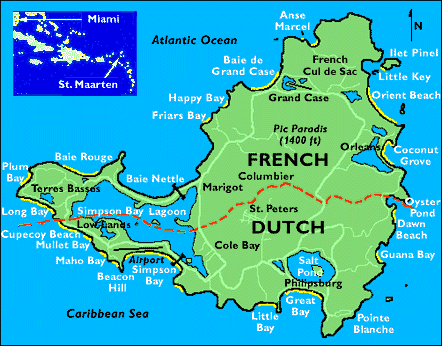
The map of St. Maarten. If it had been a cartographer or a Civil Servant then it both have been a straight line.
The story goes when it was decided between the two nations to split the island that a Dutch man (fortified by Dutch Genever) and a French man (fortified by French wine) set off from opposite sides of the island with the order to meet in the middle. If this is true, I doubt very much, but if you look at the way they border line moves off the island, then they were both drunk if it did happen. The Dutch got the South with the nice harbor and the French got the North with the better scenery. People say you go south for shopping and north for food and that is also in line with the ingrained outlook on life of the two countries. There was never a real border and now of course it does not matter at all as both countries are part of the European Union and there are no borders. I think somewhere, somehow, some civil servants are very happy that the other half of the inland did not belong to the British (they live next door on Tortola) otherwise everybody would now be busy building borders & gates due to the Brexit decision.
The Dutch main town is called Philipsburg and dates back to 1763 when John Philips a Scottish captain in the Dutch Merchant Navy (The Dutch had very few real navy ships, they preferred heavily armed merchant ships that could pay their own way) took control of the island and decided to name it after himself. Those were the days, you could name a whole town after yourself and nobody blinked an eye. Now you run into problems if you even try to name a sidewalk after yourself. I once tried to have a rock named after myself in Alaska. Just with the request to rename it from Api rock (In Redwood Bay) to Appi rock (my nickname from long time ago) I almost succeeded but then somebody had a bright moment and Regulators and Chart Surveyors where less than impressed.
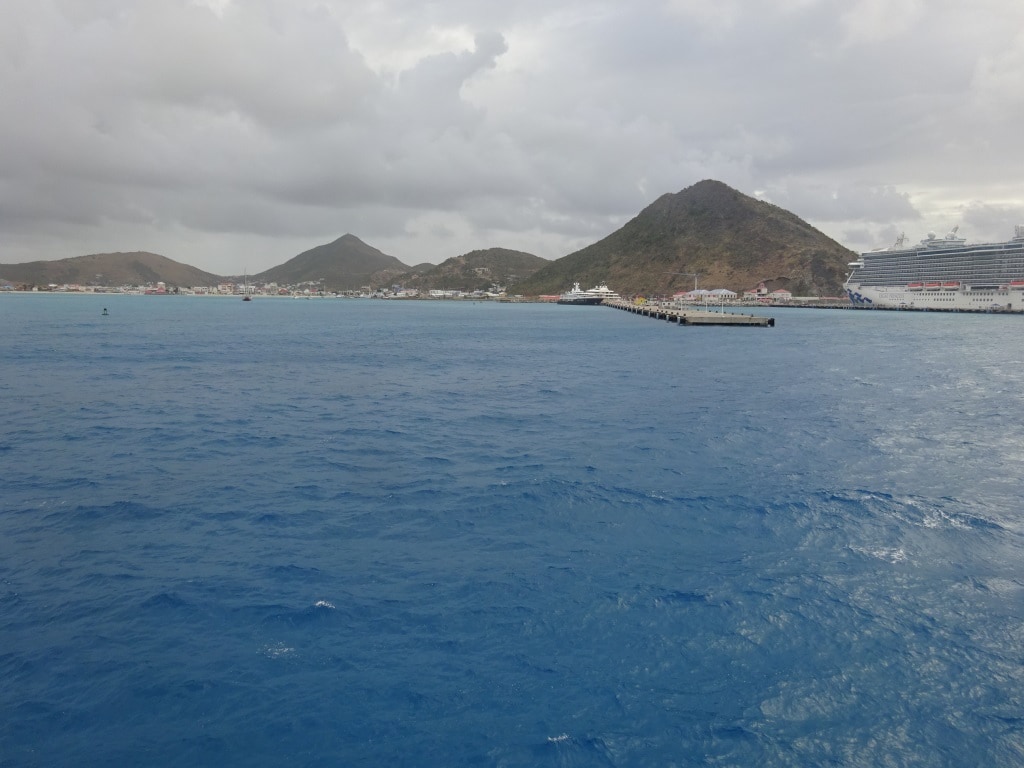
The two mega cruise piers. The one on the right where we docked this time, can handle four large cruise ships, the one on the left two.We docked next to the Regal Princess, as far inside as possible. This photo was taken on arrival from the aft mooring deck where I was observing the safe work routines of the Officer in charge and his sailors.
But the good ship Eurodam arrived on time at the pilot station and found that both the Regal Princess (already docked) and the Eurodam were going to the East dock instead of the West dock. The considerable swell was curving around the eastern shore line under an angle just a bit more to the south and that meant that the east dock had less swell than the west dock. As the Regal was already in position, we have even less swell than otherwise would have been the case, and that free gift was most appreciated. We will come in 2nd, anytime if needed here.
St.Maarten has been restored for a greater part since hurricane Irma with most shops open again. There is still a lot of repair work going on with the airport having a new constructed lounge in use until the main building has been repaired. Approx. 1200 of the 4000 hotel beds are back in use and the estimate is to have 2000 beds back in use by 2020. (As per local government figures). So they still have a long way to go but both the French and the Dutch Government have made relief funds available but it just takes time to get supplies to the islands.
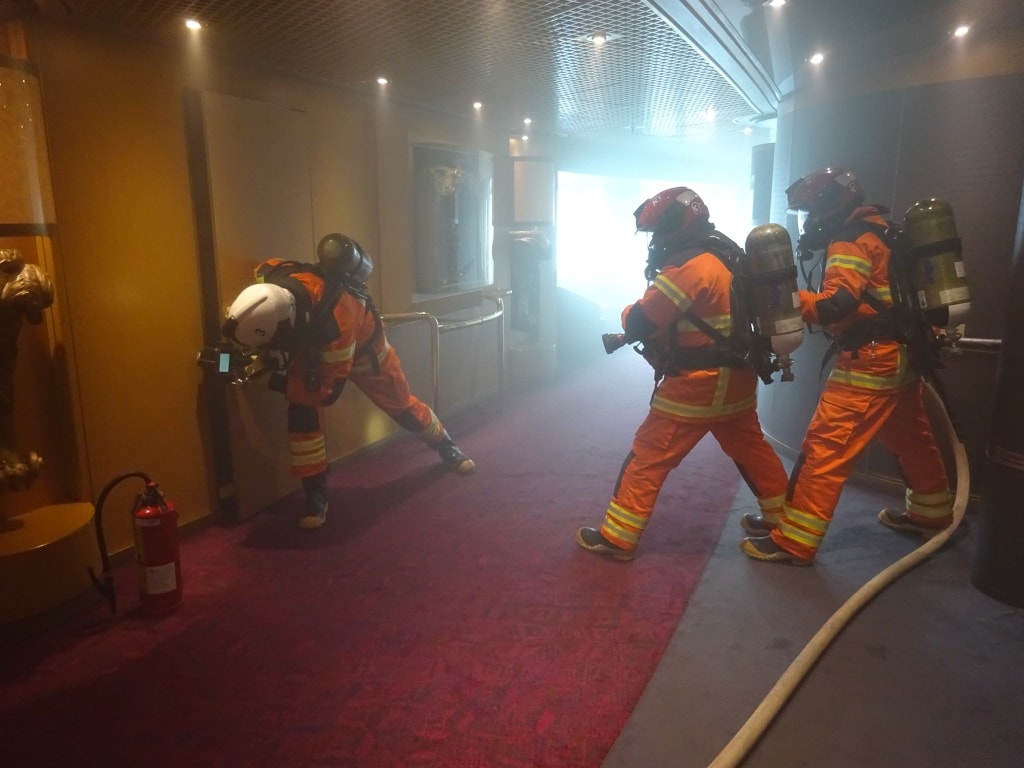
Making an entry. The team leader is using an thermal imaging camera (cost $ 10,000) to try to find out where the fire is inside, before the team goes in with the hose. Behind the wooden panel door is another steel door closing off a large area where Housekeeping stores their equipment.
My day was spent with creating mayhem on board by means of fire and boat drills. This time I had the inspiration to simulate a burn down of the center section of deck 2 public room areas and see how the crew would react if they have to search and protect a large area of the ship instead of a small space or locker. Port days such as today are ideal to do this as 90% of the guests are off the ship and will not be inconvenienced when we close Fire screen doors and run fire hoses all over the place. As expected all went very well and we now have a very proud Housekeeping Lady walking around as she reported “the fire” and because of her call the fire alarm went off and suddenly 80 fire fighters and support teams showed up.
Tomorrow we will have a sea day and then we will be in Half Moon Cay. Our route back will be across the North Atlantic as there is no other option in this case. There are cold fronts playing around near Cuba but it looks like that we will just have a window of lesser wind (so lesser waves) tomorrow and during Half Moon Cay day.
